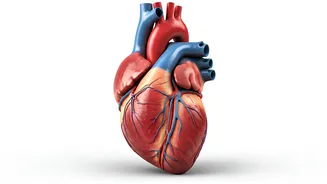Altitude and Your Heart
At higher altitudes, the air becomes thinner, resulting in lower oxygen levels. This environmental shift can pose a challenge to the cardiovascular system.
The reduced oxygen in the cabin can cause the heart to work harder to circulate blood, potentially leading to increased heart rate and blood pressure. For individuals with existing heart conditions, this extra strain can exacerbate symptoms. The decreased air pressure can also lead to the expansion of gases within the body, which might cause discomfort or complications for those prone to bloating or other gastrointestinal issues. Understanding these physiological changes is the first step towards mitigating potential risks associated with air travel and protecting cardiovascular health. Staying hydrated and avoiding excessive alcohol consumption during the flight are additional measures that may help minimize these effects. Individuals with known heart issues should consult their cardiologist before flying, seeking specific advice tailored to their condition.
Impact of Cabin Pressure
The cabin pressure in an aircraft is typically maintained at a level equivalent to an altitude of 6,000 to 8,000 feet. This lower pressure environment can significantly impact people. For example, individuals with pulmonary issues may find breathing more difficult, resulting in shortness of breath. The reduced oxygen concentration can also intensify symptoms of angina in those with coronary artery disease. Furthermore, the change in pressure can cause the expansion of gases within the body, leading to abdominal discomfort. It's crucial for passengers with pre-existing health issues to be aware of how cabin pressure might affect them. Pre-flight discussions with a doctor are recommended to develop a plan to manage any potential health complications during the flight. This may include taking prescribed medications, frequently moving to improve circulation, or, in some cases, the use of supplemental oxygen. Being prepared minimizes the risks linked to the flight and helps ensure a safe journey.
DVT: Deep Vein Thrombosis
Deep Vein Thrombosis, or DVT, is a potential health risk associated with prolonged immobility during flights. Extended periods of sitting can lead to reduced blood flow in the legs, increasing the likelihood of blood clots forming. These clots can break free and travel to the lungs, causing a pulmonary embolism, which is a life-threatening condition. Factors that increase the risk of DVT include a history of blood clots, obesity, recent surgery, and the use of hormonal contraceptives. Travelers should consider measures to reduce the chance of DVT by wearing compression stockings to improve circulation in the legs, and also doing simple exercises such as walking in the aisles or moving their legs and feet regularly while seated. Staying hydrated is also very helpful. Individuals with a higher risk of DVT, as mentioned earlier, should consult their physician before flying to assess and create a personalized plan to minimize risk, and to potentially consider preventative medication if appropriate.
Managing Flight Anxiety
Anxiety during flights can elevate heart rate and blood pressure, potentially causing stress on the cardiovascular system. For individuals with pre-existing heart conditions, this can worsen symptoms or trigger cardiac events. Managing anxiety involves several strategies. Deep breathing exercises can help to calm the nervous system and lower heart rate. Focusing on calming thoughts and using distractions like reading or listening to music can also be useful. Pre-flight preparations such as getting adequate sleep and avoiding excessive caffeine or alcohol can also play a major role. For those who experience severe anxiety, consulting with a healthcare professional to consider medication or therapy might be a good idea. Knowing and using these strategies before and during the flight can make the experience more comfortable and help minimize adverse effects on the heart.
Pre-flight Preparations
Before embarking on a flight, individuals should take steps to prepare their cardiovascular system. Consulting with a cardiologist, particularly if you have an existing heart condition, is extremely important. The healthcare professional can evaluate your medical history and give personalized advice that will help in creating a plan. Ensuring that you have an adequate supply of any necessary medications and knowing how to take them during the flight is also essential. Carrying a copy of your medical records and details of your medications could be helpful in case of an emergency. Proper hydration is also a key factor. Dehydration can worsen symptoms. Finally, avoiding excessive alcohol and caffeine before and during the flight is advisable. Taking these steps prior to boarding the aircraft will significantly help in reducing the chance of cardiac stress and will allow you to travel safely.
In-flight Strategies
During the flight, adopting certain strategies can assist in protecting your heart. Staying well-hydrated by drinking plenty of water is essential. This helps maintain blood volume and reduces the risk of dehydration. Frequent movement is crucial to prevent blood clots. It is advised that you get up and walk around the cabin every hour if possible. If you must remain seated, performing simple exercises such as ankle rotations and leg stretches can help stimulate circulation. Avoid crossing your legs for extended periods, as this can impede blood flow. Being mindful of your food intake during the flight and avoiding heavy meals is another good habit. If you experience any unusual symptoms, such as chest pain, shortness of breath, or dizziness, seek immediate assistance from a flight attendant and be prepared to explain the situation to a medical professional. Prompt action is key in managing cardiovascular emergencies.












